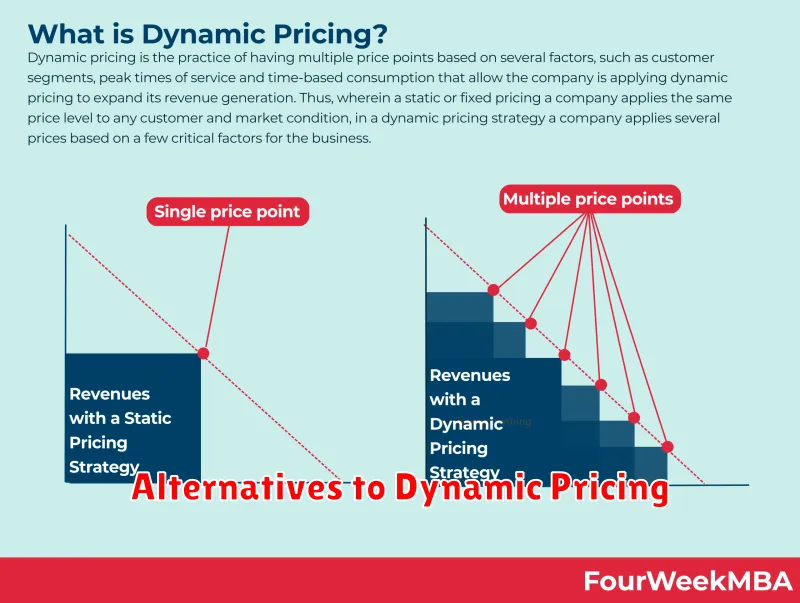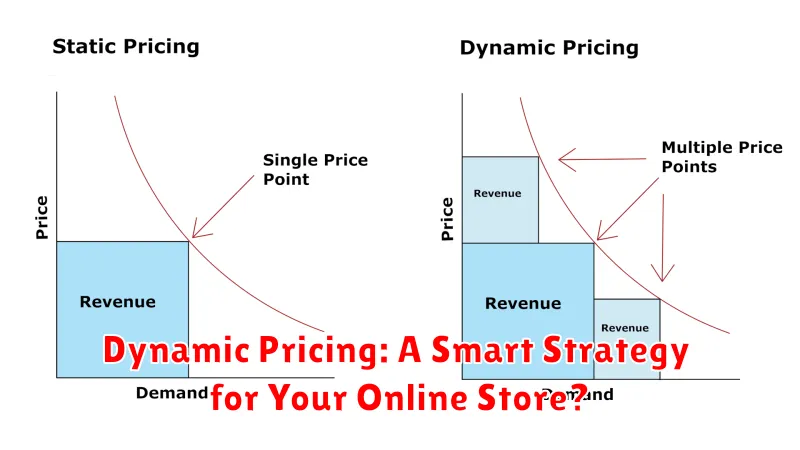In today’s ever-evolving e-commerce landscape, staying competitive requires adopting smart pricing strategies. Dynamic pricing has emerged as a powerful tool for online retailers, offering the ability to adjust prices in real-time based on various factors. This approach allows businesses to optimize revenue, react to market fluctuations, and personalize the customer experience. But is dynamic pricing the right strategy for your online store? This article delves into the intricacies of dynamic pricing, exploring its benefits, challenges, and critical considerations for successful implementation.
From understanding the core mechanics of dynamic pricing and its various models, to examining its ethical implications and potential impact on customer loyalty, we will cover the essential aspects you need to know. Discover how dynamic pricing software can automate the process and learn best practices for utilizing this potentially lucrative strategy. By the end of this article, you will be equipped with the knowledge to determine whether dynamic pricing is a smart strategy for your online business and how to effectively integrate it into your operations for maximum impact.
Understanding Dynamic Pricing
Dynamic pricing, also known as surge pricing or time-based pricing, is a pricing strategy where businesses set variable prices for products or services based on market demands and other factors. Unlike static pricing, where prices remain constant, dynamic pricing allows for fluidity and adjustments in real-time.
This strategy leverages algorithms and data analysis to determine optimal prices at any given moment. Key factors influencing these price changes include competitor pricing, customer demand, time of day, day of the week, seasonality, and even inventory levels.
Real-world examples include ride-sharing apps increasing fares during peak hours or airlines adjusting ticket prices based on demand and seat availability. Dynamic pricing is becoming increasingly prevalent in e-commerce, allowing online retailers to maximize revenue and maintain a competitive edge.
Benefits of Dynamic Pricing
Dynamic pricing offers several advantages for online businesses seeking to optimize revenue and stay competitive. A primary benefit is increased profitability. By adjusting prices based on real-time demand, businesses can capture higher profits during peak periods.
Improved competitiveness is another key advantage. Dynamic pricing allows businesses to react quickly to competitor price changes and maintain a competitive edge in a fluctuating market. This responsiveness can be crucial for attracting and retaining customers.
Enhanced customer segmentation can also be achieved through dynamic pricing. By offering personalized pricing based on individual customer behavior and preferences, businesses can improve customer satisfaction and loyalty.
Finally, dynamic pricing provides valuable data-driven insights. Analyzing pricing and sales data helps businesses understand customer behavior and market dynamics, enabling them to make informed decisions about future pricing strategies.
Challenges of Dynamic Pricing
While dynamic pricing offers significant advantages, it also presents several challenges that businesses must carefully consider.
Customer Perception and Backlash: Perhaps the most significant challenge is the potential for negative customer perception. Frequent price fluctuations can erode customer trust and loyalty, particularly if perceived as unfair or manipulative. Price changes must be implemented strategically and transparently to avoid alienating customers.
Complexity and Resource Intensiveness: Implementing and managing dynamic pricing requires sophisticated software and analytical capabilities. Businesses must invest in the right tools and expertise to monitor market conditions, analyze data, and adjust pricing in real-time. This can be resource-intensive, especially for smaller businesses.
Competitor Monitoring and Price Wars: In highly competitive markets, dynamic pricing can trigger price wars if not managed carefully. Constant price adjustments in response to competitors’ actions can lead to a downward spiral in profitability for all players involved. A well-defined pricing strategy and a clear understanding of competitor behavior are crucial to avoiding this scenario.
Legal and Ethical Considerations: In some industries, dynamic pricing practices are subject to legal and ethical scrutiny. Regulations may exist to prevent price gouging or discriminatory pricing. Businesses must ensure that their dynamic pricing strategies comply with all applicable laws and regulations.
Implementing Dynamic Pricing: Best Practices
Successfully implementing dynamic pricing requires careful planning and execution. Start with a clear pricing strategy aligned with your business goals. Define your target profit margins and identify key performance indicators (KPIs) to track the effectiveness of your dynamic pricing model.
Data analysis is crucial. Gather comprehensive data on customer behavior, competitor pricing, market trends, and product demand. This data forms the foundation for informed pricing decisions. Choose a robust dynamic pricing software that can integrate with your existing e-commerce platform and handle the complexity of your pricing rules.
Testing is essential. Before fully implementing dynamic pricing, conduct A/B testing to compare the performance of dynamic prices against static prices. Monitor the impact on sales, revenue, and customer satisfaction. Continuously monitor and adjust your pricing rules based on the results you observe. Flexibility is key to optimizing dynamic pricing strategies over time.
Transparency is important. While you don’t need to disclose your entire pricing algorithm, maintain a level of transparency with your customers. Explain the factors that influence price fluctuations, such as demand or seasonality. Building trust with your customers is crucial for long-term success with dynamic pricing.
Dynamic Pricing Strategies for Different Products
Different product types often require distinct dynamic pricing approaches. Consider these strategies based on product categories:
Commodities
For products like oil or raw materials where prices fluctuate frequently, value-based pricing tied to market indices can be effective. This ensures prices reflect real-time market conditions.
Fast-Moving Consumer Goods (FMCG)
Cost-plus pricing with dynamic markups based on demand, competitor pricing, and inventory levels can be suitable for FMCG. Promotional pricing strategies can also be implemented dynamically.
Durable Goods
Products like electronics or appliances may benefit from segmented pricing, offering different price points based on customer segments, time of purchase, or product bundles. Premium pricing can be used for newer models.
Software and Services
Subscription-based models offer flexibility for dynamic pricing. Value-metric pricing, tying price to usage or features, is common. Different tiers with varying features and prices can also be used.
Measuring the Success of Dynamic Pricing
Implementing dynamic pricing isn’t a set-it-and-forget-it strategy. Continuous monitoring and measurement are crucial to gauge its effectiveness and make necessary adjustments. Key performance indicators (KPIs) provide valuable insights into the impact of your dynamic pricing model.
Track your conversion rates. Are they improving with dynamic pricing? A higher conversion rate suggests customers are responding positively to the adjusted prices. Conversely, a drop in conversions could indicate a problem with your pricing strategy.
Revenue growth is another critical metric. While conversions are important, ultimately, dynamic pricing should boost your bottom line. Monitor your overall revenue and profit margins to see the real impact of the strategy.
Customer lifetime value (CLTV) is a crucial long-term metric. Dynamic pricing shouldn’t just focus on short-term gains. Analyze how your pricing strategy impacts customer retention and long-term profitability.
Finally, keep an eye on your competitors’ pricing. Understanding their strategies can inform your own adjustments and help you stay competitive in a dynamic market.
Common Mistakes to Avoid with Dynamic Pricing
Implementing dynamic pricing requires careful planning and execution. Failing to do so can lead to customer dissatisfaction and lost revenue. Here are some common mistakes to avoid:
Overly Aggressive Price Fluctuations
Avoid frequent and drastic price changes. Customers can become frustrated and lose trust if prices fluctuate too dramatically. This can lead to price comparison shopping and ultimately, choosing a competitor.
Lack of Transparency
Be upfront with customers about your pricing strategy. Explain why prices may change, and be prepared to answer questions about your dynamic pricing model. Transparency can build trust and mitigate potential negative reactions.
Ignoring Competitor Pricing
While dynamic pricing should consider various factors, completely ignoring competitor pricing can be detrimental. Understanding the competitive landscape is essential to ensure your prices remain competitive and attractive to customers.
Neglecting Value Perception
Don’t solely focus on cost and profit margins. Consider the perceived value of your products or services. If customers perceive a price as unfair or disproportionate to value, they are unlikely to purchase, regardless of market fluctuations.
Alternatives to Dynamic Pricing

While dynamic pricing offers flexibility, several alternative pricing strategies can be equally effective, depending on your business model and goals.
Cost-Plus Pricing
This traditional method involves calculating the total cost of a product and adding a fixed markup percentage for profit. It’s simple to implement but may not be optimal in highly competitive markets.
Value-Based Pricing
This strategy focuses on the perceived value of your product to the customer. It allows for premium pricing if your product offers unique features or benefits.
Competitive Pricing
This involves setting prices based on what your competitors are charging. It requires close monitoring of the market and can lead to price wars if not managed carefully.
Promotional Pricing
Offering temporary discounts, coupons, or other promotions can stimulate demand and clear out inventory. This can be effective for short-term sales boosts.
Is Dynamic Pricing Right for Your Business?

Determining whether dynamic pricing is suitable for your business requires careful consideration of several factors. It’s not a one-size-fits-all solution and its effectiveness depends heavily on your specific industry, business model, and customer base.
Competition plays a crucial role. In highly competitive markets, dynamic pricing can be a powerful tool to stay ahead. However, in markets with less competition, it might be unnecessary or even detrimental.
Your product type is another key factor. Dynamic pricing is often well-suited for products with fluctuating demand, such as airline tickets or hotel rooms. For products with stable demand, it might offer less benefit.
Customer relationships should also be considered. While dynamic pricing can maximize revenue, it can also alienate customers if not implemented transparently and fairly. Consider how price fluctuations might be perceived by your target audience.
Finally, evaluate your technical capabilities. Implementing dynamic pricing requires robust software and data analysis tools. Ensure you have the necessary resources and expertise to manage a dynamic pricing strategy effectively.

